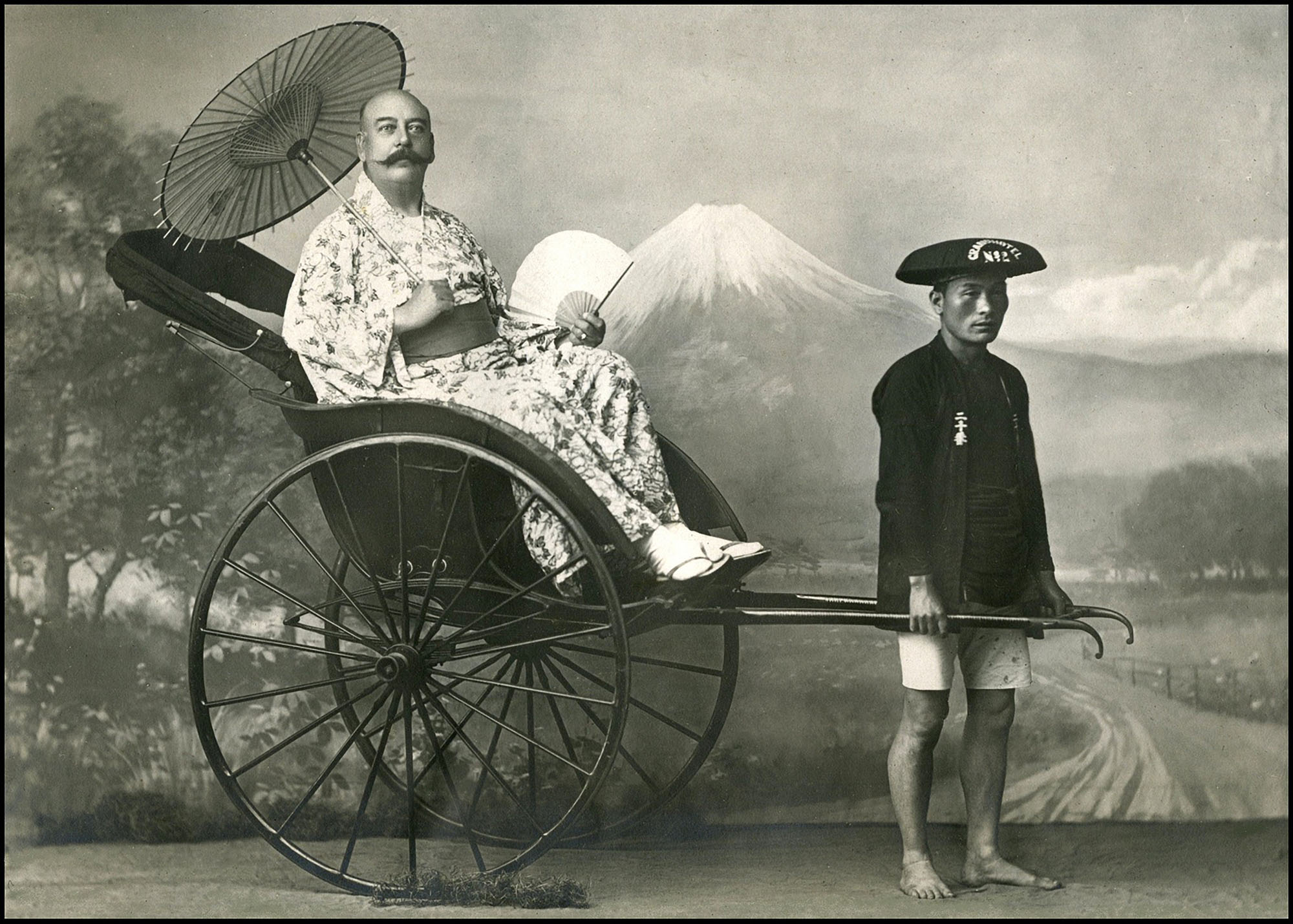If foreign visitors to Japan in the Edo Period (1603-1868) ran certain risks by committing their impressions of the country to paper in a totalitarian state that worked hard to maintain its obscurity, the new Meiji Era (1868-1912) positively encouraged attention.
July 4, 1879, marked the day when a Japanese sovereign first shook the hand of a foreigner. This took place between Ulysses S. Grant and the Meiji Emperor when Grant and his wife attended a kabuki performance held in their honor at the Shintomiza Theater in Tokyo. Among the select audience was a young American woman, Clara Whitney, who wrote about the Shimbashi geisha who danced that night, each young woman, "dressed in a robe made of the dear old Star and Stripes, while upon their heads shone a circlet of silver stars ... their girdles were dark blue, sandals, red and white, and presently they took out fans having on one side the American and upon the other the national flag."
Japan hosted an increasing number of privileged foreign residents, who, like Mary Crawford Fraser, author of "A Diplomat's Wife in Japan," Sir John Bachelor, a member of the church mission society in Hokkaido, and the American teacher and Japanophile William Griffis, dabbled in prose that, in its indebtedness to long descriptive passages, aspires to travel writing.

















With your current subscription plan you can comment on stories. However, before writing your first comment, please create a display name in the Profile section of your subscriber account page.